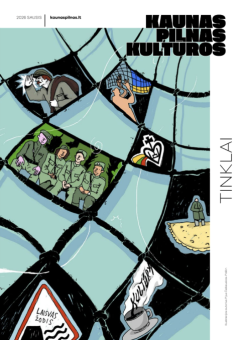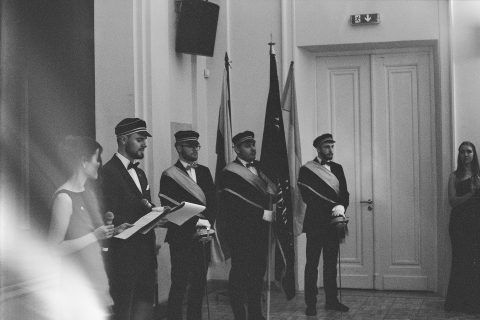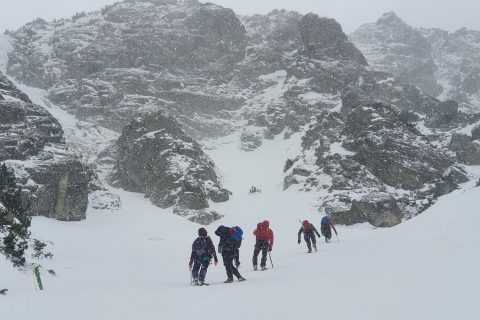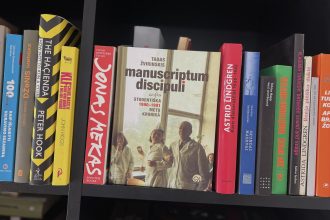“Head-over-heels in love with nature,” such is the confession with which the Vytautas Magnus University’s Faculty of Natural Sciences Academic Youth’s Scientific Association Modusas introduces itself on its website. In the photos, smiling young faces gaze back at me, adorned in green sweaters. As I prepared for the interview with the current president of the association, Martyna Buklytė, and Neringa Barauskaitė, who served three terms as president, I didn’t expect to find so much inspiration and integrity. The association’s activities, intertwined with studies and nature exploration, have already become an inseparable part of its members’ lives.
Modusas will celebrate a beautiful twentieth anniversary next March – the scientific association was founded in 2005. It was an initiative by doctoral students who wanted to come together and be part of a community. Initially, it became a platform for sharing ideas, developing scientific activities, and presenting them to a broader audience, with a focus on increasing interdisciplinarity. “Later, students from other courses and fields joined, the organization grew, and it evolved from a closed circle into an open public organization,” Neringa says.
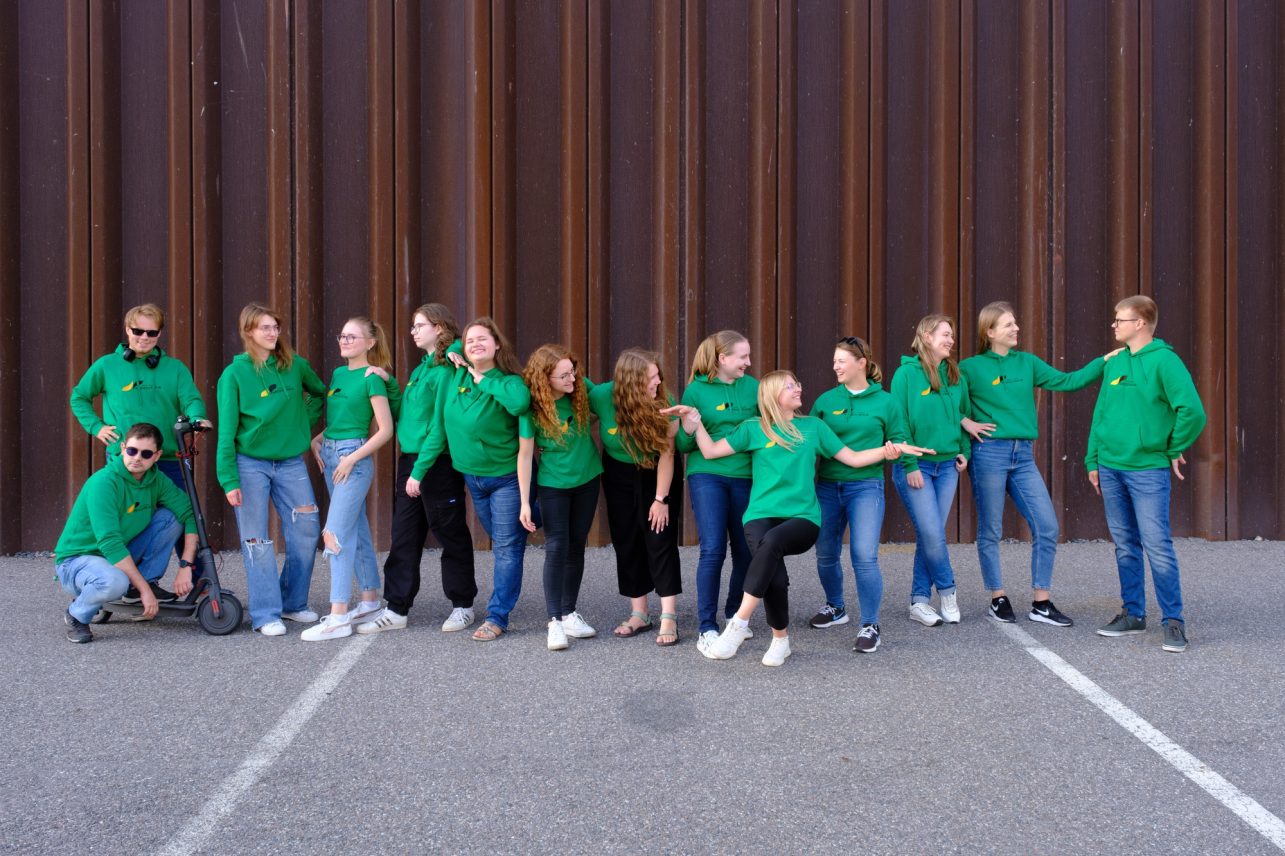
The girls are open about the fact that Lukas Žemaitis, the founder of Genomika, a deep biotech company in Lithuania, and an alumnus of the association, is an inspiring person. He is someone to look up to and find your own ways to change the world. I do not doubt that you’ve at least heard of Genomika and its work: the company has encoded the Lithuanian national anthem into DNA and created the first painting using DNA embedding. The invisible side of the painting is also impressive – it encodes photos of M. K. Čiurlionis’ works and people’s messages. Neringa proudly added that these works precisely reflect the association’s key principle: the link between science and creativity, which the members of Modusas strive to develop.
There is certainly no shortage of creativity in Modusas activities; students here channel their skills, hobbies, and inspirations. So, what do the members of the scientific association do? “We go to fairs, and schools, organize educational events, quizzes, discussions, and make our presence known on social media. Our internal activities are diverse and include skills development, internal training, annual reviews and reflections, preparing interviews, and writing texts. We don’t only engage in scientific work, we also take breaks from science by going on trips, organizing movie nights, celebrating birthdays, and other occasions,” says Martyna, agreeing that although members work hard, they don’t miss opportunities to have fun. Of course, official meetings also take place. For instance, in February, during the general meeting, the association elects a president and a board of coordinators, and the annual report is discussed. During the fall and spring semesters, a general meeting is held once a week to discuss current issues and welcome new members. Through these activities, the members of the scientific association fulfill their mission of promoting the natural sciences to the public and encouraging people to pursue studies in these fields.
When asked whether this mission remains relevant after two decades, Martyna explains that the goal remains the same, but the way it is presented has changed, “For example, if in the past the focus was on scientific activities and bringing academics together, now we lean more towards educating the public.” Neringa adds that experiential learning and experiments are particularly popular in schools, while the association aims to engage adults through educational sessions, lectures, and other events. However, I do not doubt that the members’ experiments with acids and dry ice magic captivate everyone, not just the youngest participants.

The girls revealed that the work doesn’t stop even in the summer – the team visits events and fairs, and two members take care of a large group of loyal society members, including cockroaches and stick insects. The Modusas members have previously raised African snails, a hedgehog, and ants. I asked Martyna and Neringa if they ever get tired of learning even after their studies and during vacations. After all, both girls study at the Faculty of Natural Sciences: Martyna is pursuing a bachelor’s degree in environmental science, and Neringa is a PhD student in Biology. They simply smiled. Engaging in interesting activities with like-minded people is inspiring, they combine nature and science, and the activities complement each other.
“Leisure activities are definitely spiced up by night hikes or deer watching. After a trip to Vaišvydava to observe the natural environment once, for quite some time, when walking in nature and the city, I kept naming the plants I had seen during the outing. Science brings knowledge into my personal life that I apply daily, and it fosters a responsibility to protect nature. I can’t just take a “normal” walk anymore, I always return with a bag of litter I found on the way. The strangest thing I found was a nearly sunken Maxima shopping cart in the Neris River,” Neringa says. “In the community, you find like-minded people and friends, and your perspective on life changes – you want to move forward and become a more flexible person,” Martyna adds.
If nature and society’s activities seem appealing to you, but you’re not a student of the Faculty of Natural Sciences, don’t dismiss the idea. Anyone studying in Lithuania can become a member of Modusas; all you need to do is attend one of the meetings. The society includes psychologists, IT specialists, and financiers, all united by a love for nature. Currently, the society has 40 members, with more than half actively participating in its activities. Members are categorized into either full members or observers. Full members, in addition to participating in all activities and actively engaging, also commit to paying a one-time membership fee. They gain access to the society’s facilities and can apply for incentive scholarships for their active involvement. On the other hand, observing members receive information about planned activities but choose to participate only in the events that interest them. There’s plenty of freedom and options to choose from. According to Neringa, some members even changed their field of study after trying out various activities in our society. For example, the coordinator of the finance department later decided to continue her studies in economics, where she is still successfully working today.
Is it possible to be a student and not have adventures? Of course not. However, one of those adventures felt more like a nightmare. During a fair at the Žalgiris Arena, as the Modusas team was packing up, they realized they had lost… a cockroach! A special search operation for the runaway began, and eventually, the missing cockroach was found hiding under a box. The cockroach, alive and well, was returned to its cage. Among other activities, Neringa most vividly remembers a hike through the Aukštumala bog, where there was a constant risk of sinking up to their armpits. The Modusas team hiked in such conditions for 18 kilometers. Martyna recalled the beginning of her involvement, “My biggest experience was the scientific conference Women in Science: Challenges and Opportunities, which was both a challenge and an opportunity to experience all the behind-the-scenes work. I realized that I managed the task well and that I enjoyed the multifaceted activities involved in organizing a conference. It was gratifying to see many smiling Modusas members in the audience, feel their support, and recognize the importance of such events. I always feel a bit nervous when representing the society.”

The society studies, visits, and protects nature, but where do they relax in nature? Neringa often chooses spots near water, her favorite being a small peninsula near Pažaislis and the forest. Martyna enjoys walking where nature merges with architecture and says that for her, the most beautiful place to this day is Laisvės Avenue. When she’s not in the city, the society’s president takes care of her farm and prefers to spend time along the banks of the Nevėžis and Barupė rivers near her home. Martyna appreciates that no one finds her there, but she finds inner peace, “Being there, I realize that my chosen Environmental Science studies are essential – they aim to protect and clean the environment because, for example, the Nevėžis is a polluted river surrounded by beautiful nature. It brings a sense of calm. My studies align with my life’s goal of protecting and nurturing nature.” Remember how I mentioned at the beginning of the article the sense of unity where different life aspects come together into a whole? It seems that in Modusas this happens naturally.
